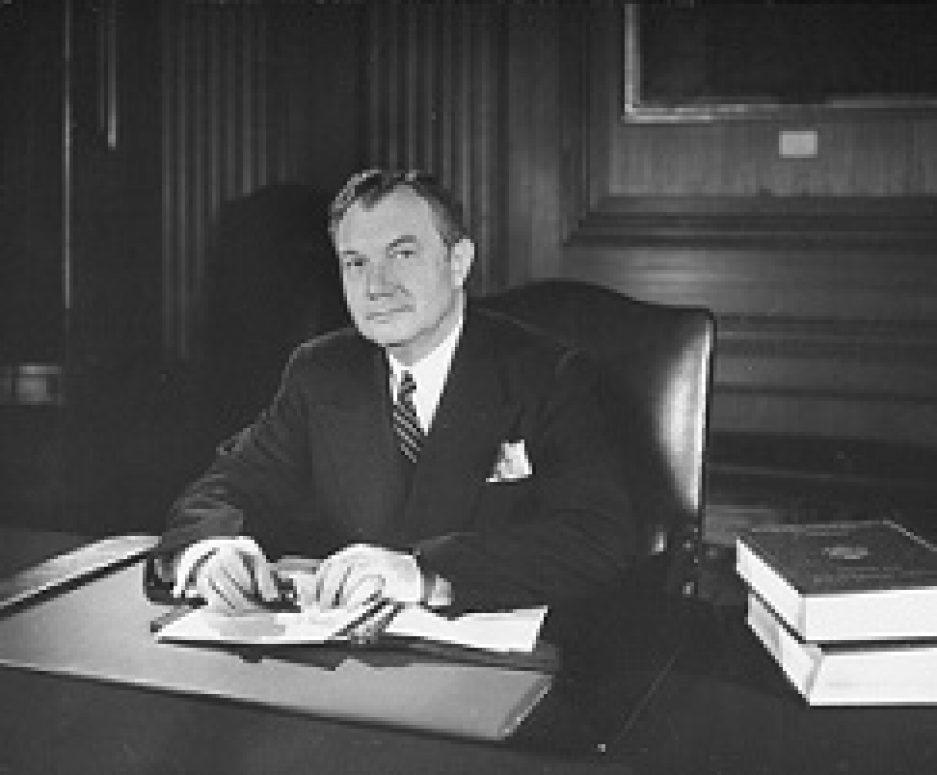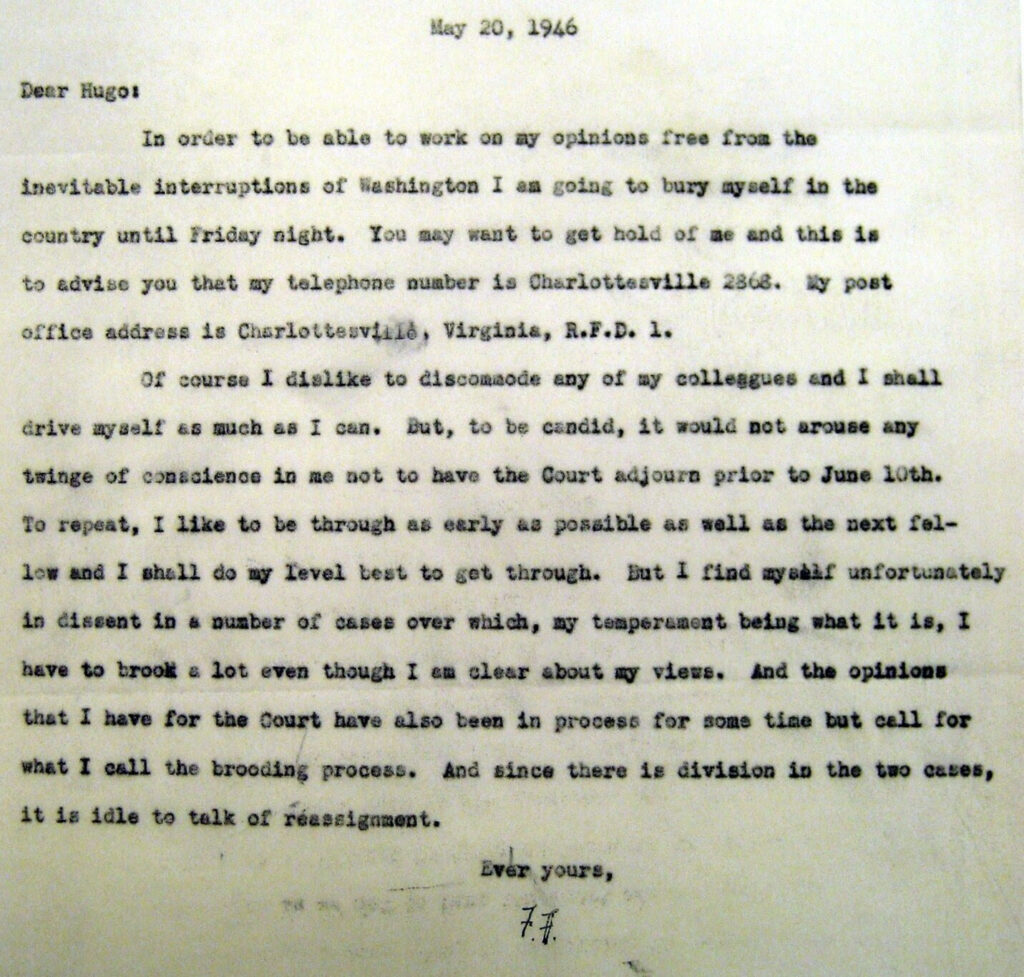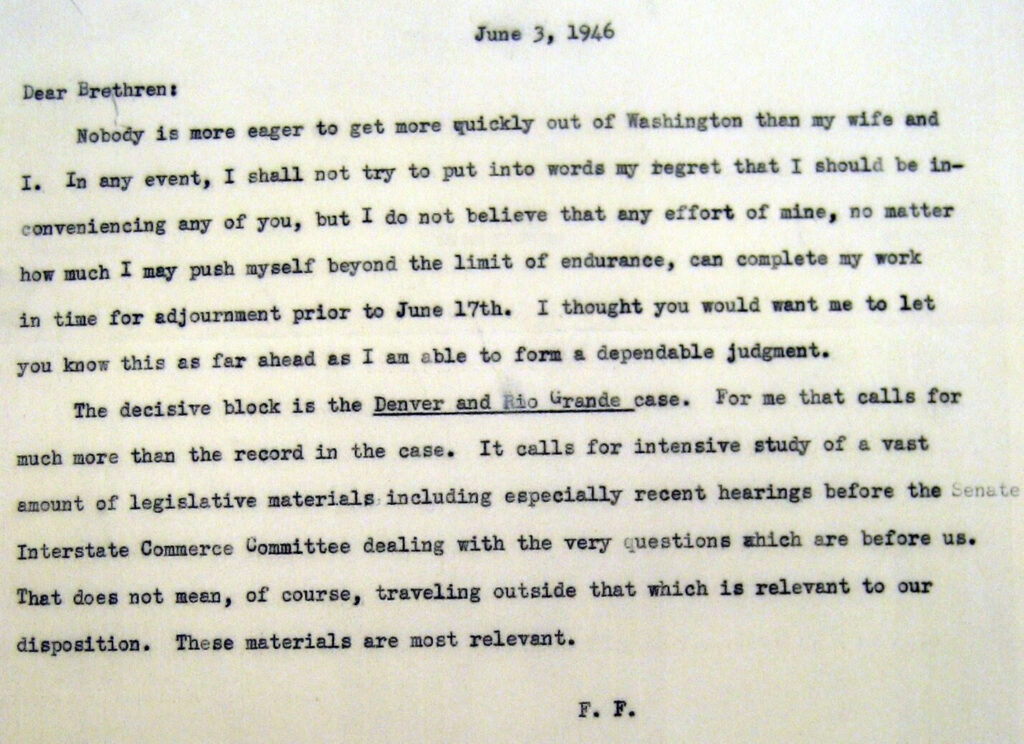By May 1946, the Supreme Court of the United States had finished hearing oral arguments in the cases that the justices had decided to hear argued during that term, which had begun the previous October.
The justices had privately conferenced—voted on—each argued case. In every case, a justice in the majority had been assigned to draft the Court’s opinion, for circulation to all, and then re-voting, and, likely, revisions and further circulations of drafts. Some justices in majorities worked on concurring opinions. Justices who were in the minority in this or that case were at least contemplating, and some probably were drafting, possible dissenting opinions.
Each justice had extra work to do that term because the Court was short-handed—by May 1946, seven justices were doing the work of nine. Chief Justice Harlan Fiske Stone had died in April. Justice Robert H. Jackson was in Nuremberg, prosecuting Nazi war criminals and missing the full Court year.
In May, the Court was pushing to meet a self-imposed deadline. Each justice was trying to finish writing his opinions so that the Court could hand down the last of them on Monday, June 10, 1946, and then recess for the summer.
On Monday, May 20, Justice Felix Frankfurter decided to leave Washington and its distractions. He headed for a friend’s home in Charlottesville, Virginia, where he could write his opinions undisturbed. Frankfurter dictated this explanation and had it sent to Justice Hugo L. Black, the senior associate justice who was acting as chief justice, and also to the other five justices who were working at the Court:
Two weeks later, Justice Frankfurter was back in Washington but not done with his opinion-writing.
His biggest sticking point was Reconstruction Finance Corporation (RFC) v. Denver & Rio Grande Western Railroad Company, a railroad reorganization case. It had been argued to the Court on two days early in March 1946. Thereafter, when the justices had voted on the case in conference, Frankfurter was in the minority. He regarded it as a major case and wished to write his dissenting views.
But as of Monday, June 3, 1946, Justice Frankfurter had not completed—maybe he had not even begun—that writing process.
So he dictated and sent to his fellow justices another explanatory memorandum:
This memorandum made the problem clear: Frankfurter was determined to write a significant dissenting opinion in Denver & Rio Grande Western Railroad Company, he would not be able to do that in less than a week, and so he would be delaying the start of the Court’s summer recess from (at least) June 10 until June 17.
Unless….
Justice Frankfurter’s memorandum proposed a solution to his problem that was the Court’s problem. He added a “P.S.” paragraph saying, in effect, “Don’t wait on me:”
The Court took the option. On Monday, June 10, 1946, justices announced the remaining decisions. Justice Stanley Reed announced his opinion for the Court in Denver & Rio Grande Western Railroad Company. It noted, “Mr. Justice Frankfurter dissents, and will set forth the detailed grounds for his dissent in an opinion to be filed hereafter.”
At the end of that decision day, the Court began its summer recess.
Over the next four-plus months, Justice Frankfurter finished writing his opinion in the case.
On October 28, 1946, the Court released that dissenting opinion.



